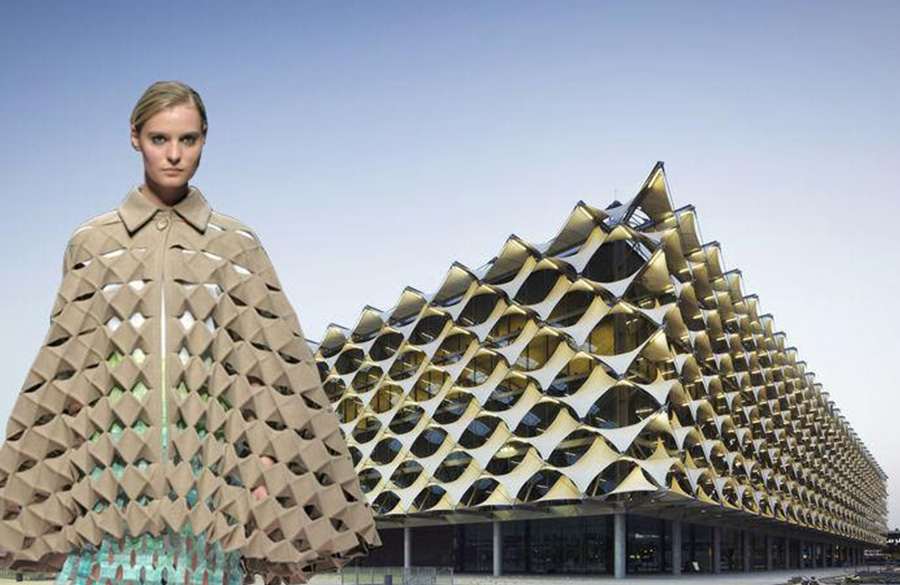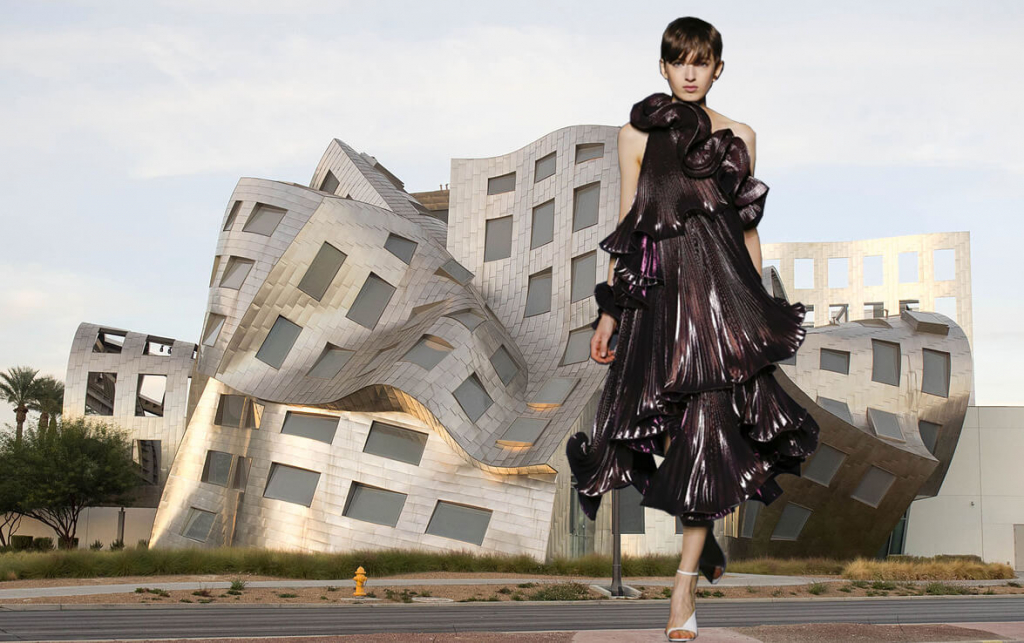Fashion and architecture are related in very simple and fundamental ways. Traditionally, both fashion and architecture serve the human lifestyle. Fashion provides people with clothes to wear. Architecture provides people with homes to live in.
Fashion and Architecture
However, the definitions of fashion and architecture have been proven to be not so simple. The creative aspect of them complicated the above definitions. With the emergence of avant-garde and deconstructivism, fashion and architecture are becoming more of a pure creative expression.

Fashion and architecture continually defy their original purpose of practicality and simplicity. In this process, they become the intersection between everyday life and the art form. Although the connection between architecture and fashion was faint in the past, nowadays, many fashion designers are directly influenced by the creative spirit of many architects.
Keep reading to find out everything about it!
Hand in Hand – How has Fashion Reflected Architecture in the Past
As art forms, architecture and fashion go through many different artistic movements. It defines the trends and values of the generation. Some architectural movements can directly be linked to the fashion movement that was simultaneously happening. But some others are subtle in how they are connected.
Art Deco and Flapper Girls
One of the most notable architectural movements is Art Deco which took place in the 1920s. It’s possible to identify Art Deco architecture by its symmetry and geometric shapes. It is often accompanied by sleek materials that give an impression of gold. One notable example of Art Deco architecture is Chrysler Building in New York City. People also tend to associate Great Gatsby with Art Deco design.
The accompanying fashion style at the time was flapper girl style. The androgynous silhouette characterizes the flapper girl style. The dresses that flapper girls used to wear do not have sleeves. There are also no waistlines in these dresses. The dresses were often made of faux silk and jersey. Hence, the overall silhouette and the material allowed free and fluid movements. As if to reflect the Art Deco buildings, the dresses were ornated with beads in geometric patterns.

The flapper girl style and Art Deco design are related by its redefinition of luxury at the time. Both styles were modern and optimistic. The straight and flat silhouette of the flapper girl dresses is reminiscent of the geometric and symmetrical designs of Art Deco. Yet, the fluid movement that the dress created perfectly contrasted with the rigid and solid architectural style.
Mid-Century Modern and the 1960’s and Mod Style
The mid-century modern was an architectural trend back in the 1940s to 1970s. Large windows, flatter outer surface, and cubic/ rectangular defines this style. The mid-century modern homes are also simplistic due to their minimal color use like beige, white, grey.
As if to contrast the overall architectural style in this time, womenswear was very flashy in the 1960s. The shift dresses which trended in the 1960s consisted of many bright colors like pink, baby blue, orange, and pastel yellow. Sometimes, these dresses also had 60’s iconic motifs. The trendy motifs include wave and geometric flower patterns.
Another fashion style popularized during the 1960s was the Mod style. Originating in the UK, sharply tailored looks characterizes the style. With the understated and unique colors, the mod style was all about looking smart, chic, and very modern. The trend matches with the mid-century modern architecture as it was also understated.
60’s and Onwards: Clearer Connection between Fashion and Architecture
Being an art form, fashion and architecture inspire one another.
Especially in fashion’s avant-garde movement in the past decades, many designers take inspiration from building constructions. Rising designers like Peter Do and JW Anderson are examples of such designers. Of course, there is also Zaha Hadid, an architect who also takes inspiration from fashion and incorporates it into her architectural practices.
Zaha Hadid: the Pioneer of Bridging Fashion and Architecture
It would be a crime to not mention Zaha Hadid, the late architect that bridged the fashion world and the architectural world.
Even though she is using hard materials in her architecture, Hadid makes her work look very fluid. Some of the works that demonstrate her style are the Heydar Aliyev Centre and Galaxy Soho.
Heydar Aliyev Centre’s construction has multiple curvatures. The grid formed by the construction blocks also shows the building’s impressive curves and swoops.
The Galaxy Soho, in Beijing, has an elliptical build and has multiple layers of disk-like platforms.
On top of having a portfolio full of breathtaking architecture, Hadid also collaborated with many fashion houses to create shoes and bags. These items are clearly inspired by the architectural project that Hadid has done. The fusion between fashion and architecture creates unique designs.
For instance, the handbag collaboration between Zaha Hadid and Fendi is reminiscent of Hadid’s iconic layering of construction materials. Just like her architecture projects, the bag has leather layers all over it.
Another iconic fashion collaboration that Hadid led was a pair of shoes with the Brazilian label, Melissa. The shoes have many curvatures and holes. Reminiscent of the Foamrunner shoes, they look like they would come out of the science fiction movies.
Fashion Designers are Constantly Find Inpiration in Architecture
With the avant-garde trend in fashion, many designers are looking at the architecture for inspiration. Unlike the earlier times where fashion and architecture corresponded in obscure ways, the avant-garde designers are blurring the line between fashion and architecture. Perhaps looking at this Tumblr Mood Board would give our audience a sense of what architecture-inspired fashion looks like.
As seen through the mood board, designers are using architecture in multiple ways. A designer might use textile as building blocks and layering their clothing. Another might emulate an entire building structure. Another might just use detailed decorations on a structure and use the same pattern on their fabrics. There are endless possibilities when designers take inspiration from architecture.
Peter Do’s Architectural Clothes
Peter Do is one of the rising designers that is quickly gaining popularity for his androgynous and monochromatic designs. Even in his biography, Do credits “architectural construction” as an important aspect of his design.
With the box-shaped clothes and calculated cuts and holes in the fabric, Do is able to curate a collection that is indeed architectural.
J.W. Anderson – Loewe Puzzle Bag
The leather puzzle bag from Loewe is architectural in its essence. The bag looks like it has many geometric shapes. It is reminiscent of many geometric shapes that Anderson stacked onto one another to create a building.
With the increasing amount of designers who are looking into futuristic designs, there will be more fashion designs getting their inspiration from built structures. We are also hoping to see architects who will incorporate iconic fashion design into their projects.
Read our blog regarding the fashion industry’s rising stars who may be using architecture in their designs!






